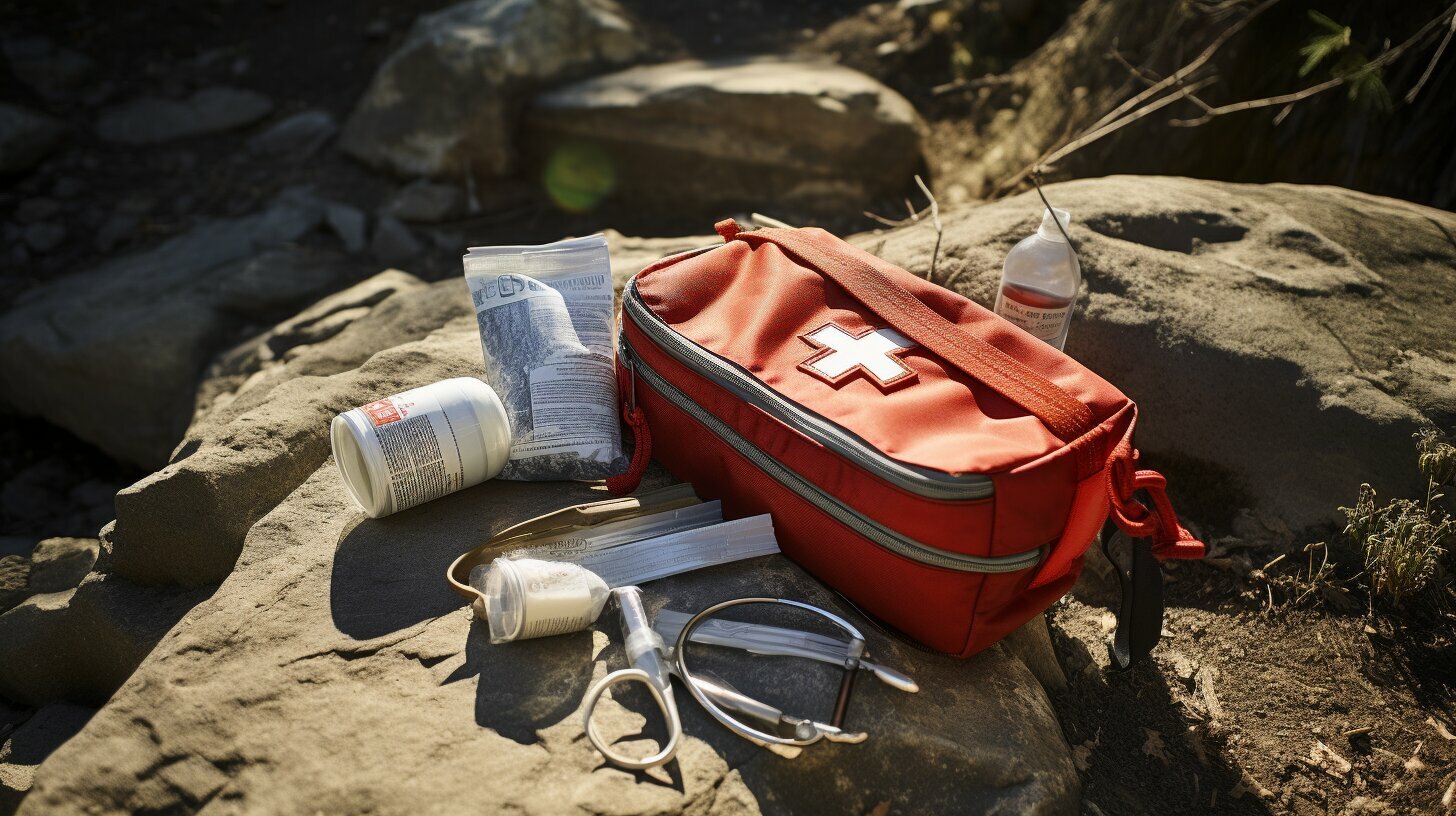When embarking on a hiking adventure, ensuring your safety is paramount. A well-stocked hiker’s first aid kit is an essential outdoor essential. Whether you are a seasoned hiker or venturing into the wilderness for the first time, having the right supplies can make all the difference in an emergency. In this article, we will explore the key components of a hiker’s first aid kit and provide valuable insights into preparing for any unforeseen circumstances on the trail.
Before we dive into the specifics of what to include in your first aid kit, let’s emphasize the importance of trail safety. When it comes to outdoor adventures, being prepared is crucial. It’s essential to consider the potential risks and challenges that may arise during your journey. Whether it’s a minor scrape, a twisted ankle, or a more serious injury, having the necessary supplies can significantly impact the outcome.
So, what should you have in your hiker’s first aid kit? Let’s start with the basics. Antiseptic wipes, bandages, gauze pads, medical tape, pain relief medication, insect sting treatment, and tweezers are all staples of a well-prepared kit. These items are essential for providing initial first aid care during hiking emergencies.
For longer or more challenging hikes, it’s important to consider a more comprehensive first aid kit. In addition to the basic supplies, including finger splints, SAM splints, wound coverings, medications, and treatments like hand sanitizer, eye drops, and rehydration salts can be invaluable. These items are crucial for addressing more serious injuries or illnesses that may occur during outdoor adventures.
Don’t forget to include personal items in your kit as well. Sunscreen and bug spray are essential for protecting against sunburn and insect bites during your hikes. These small but essential items can make a big difference in your comfort and overall well-being.
When it comes to ultralight backpacking, weight and bulk are important factors to consider. You may need to reduce the quantity of certain items or opt for pre-packaged kits designed specifically for ultralight hiking. These kits are convenient and ensure you have the necessary first aid supplies while keeping the weight to a minimum.
Remember to evaluate the length and nature of each hiking trip when deciding what items to include in your first aid kit. Consider personal needs, potential risks, and the remoteness of your hiking location to ensure you have appropriate and adequate supplies.
Additionally, it’s essential to consider additional safety gear for your outdoor adventures. Items such as an emergency bivvy, map and compass, GPS device, and headlamp are all invaluable for navigation, emergencies, and ensuring visibility during night hikes.
Lastly, education and knowledge are vital components of effective first aid techniques. Consider taking a first aid course or referring to educational resources on wilderness medicine to improve your preparedness and confidence in handling emergencies.
In conclusion, a well-stocked hiker’s first aid kit is an essential outdoor essential. By considering the specific needs of your hiking adventures and including the necessary supplies, you can ensure your safety and be prepared for any emergency on the trail. Stay safe, be prepared, and enjoy your outdoor adventures!
Essential Items for a Hiker’s First Aid Kit
A hiker’s first aid kit should always include a range of essential items to provide immediate care in case of injuries or emergencies on the trail. These items are crucial for ensuring safety and well-being during outdoor adventures.
Some of the basic items that should be included in a hiker’s first aid kit are:
- Antiseptic wipes: To clean wounds and prevent infection.
- Bandages: For covering cuts, scrapes, and blisters.
- Gauze pads: To control bleeding and dress larger wounds.
- Medical tape: To secure bandages and dressings in place.
- Pain-relief medication: To alleviate discomfort from minor injuries or pain.
- Insect sting treatment: For immediate relief from insect bites or stings.
- Tweezers: To remove splinters, ticks, or other foreign objects from the skin.
These items are essential for providing initial first aid care and treating common injuries encountered during hikes. It is important to consider the duration and difficulty of the hike when deciding on the quantity of each item to include in the kit.
In addition to the basic items, more comprehensive kits may require additional supplies such as:
- Finger splints and SAM splints: For stabilizing fractures and sprains.
- Wound coverings: To dress larger or more serious wounds.
- Medications: Including over-the-counter painkillers, antihistamines, and any necessary prescription medications.
- Treatments like hand sanitizer, eye drops, and rehydration salts: To address specific needs and conditions that may arise during hikes.
It is also important to consider personal needs when assembling a hiker’s first aid kit. Personal items like sunscreen and bug spray should be included to protect against sunburn and insect bites. Taking into account individual requirements and potential risks can help ensure that the first aid kit is adequately stocked for a safe and enjoyable hiking experience.
| Item | Function |
|---|---|
| Antiseptic wipes | Cleans wounds and prevents infection. |
| Bandages | Covers cuts, scrapes, and blisters. |
| Gauze pads | Controls bleeding and dresses larger wounds. |
| Medical tape | Secures bandages and dressings in place. |
| Pain-relief medication | Alleviates discomfort from minor injuries or pain. |
| Insect sting treatment | Provides immediate relief from insect bites or stings. |
| Tweezers | Removes splinters, ticks, or other foreign objects. |
Comprehensive Kits for Hiking Emergencies
For longer or more challenging hikes, a more comprehensive first aid kit is necessary, including additional items to address potential injuries and medical needs. In addition to the basic first aid supplies like antiseptic wipes, bandages, and pain-relief medication, it is important to include items that can provide more advanced care in remote areas.
Wound coverings: Include a variety of wound coverings such as adhesive bandages, non-stick gauze pads, and sterile dressings. These are essential for treating cuts, abrasions, or larger wounds that may occur during hiking accidents.
Medications: Along with pain-relief medication, it is advisable to carry over-the-counter medications for common ailments like allergies, cold and flu, digestive issues, and motion sickness. Additionally, if you have any prescription medication, ensure you have enough for the duration of your hike.
Hand sanitizer, eye drops, and rehydration salts: These items are essential for maintaining cleanliness and addressing specific health needs. Hand sanitizer helps prevent the spread of germs, eye drops can relieve dry or irritated eyes, and rehydration salts can replenish electrolytes lost during strenuous activity.
| Item | Purpose |
|---|---|
| Wound coverings | For treating cuts, abrasions, and larger wounds |
| Medications | Pain relief, allergies, cold and flu, digestive issues, motion sickness, prescription medication |
| Hand sanitizer | Maintains cleanliness |
| Eye drops | Relieves dry or irritated eyes |
| Rehydration salts | Replenishes electrolytes lost during strenuous activity |
Additional Considerations
For an even more comprehensive first aid kit, pack items like a multi-tool, thermometer, and surgical gloves. These tools can be useful in medical emergencies or situations that require more advanced care. However, it is important to strike a balance between carrying necessary items and minimizing the weight and bulk of your pack. Evaluate the length and nature of your trip, consider personal needs, and choose items accordingly.
Remember to check and restock your first aid kit regularly, replacing any expired or used items. Additionally, consider including additional safety gear such as an emergency bivvy, map and compass, GPS device, and headlamp. These tools will enhance your navigation abilities and provide essential illumination during night hikes or emergencies.
Lastly, investing in education and knowledge of first aid techniques is crucial. Consider taking a first aid course or referring to educational resources on wilderness medicine. Having the knowledge and skills to effectively provide first aid during hiking emergencies will boost your confidence and ensure you can respond appropriately in critical situations.
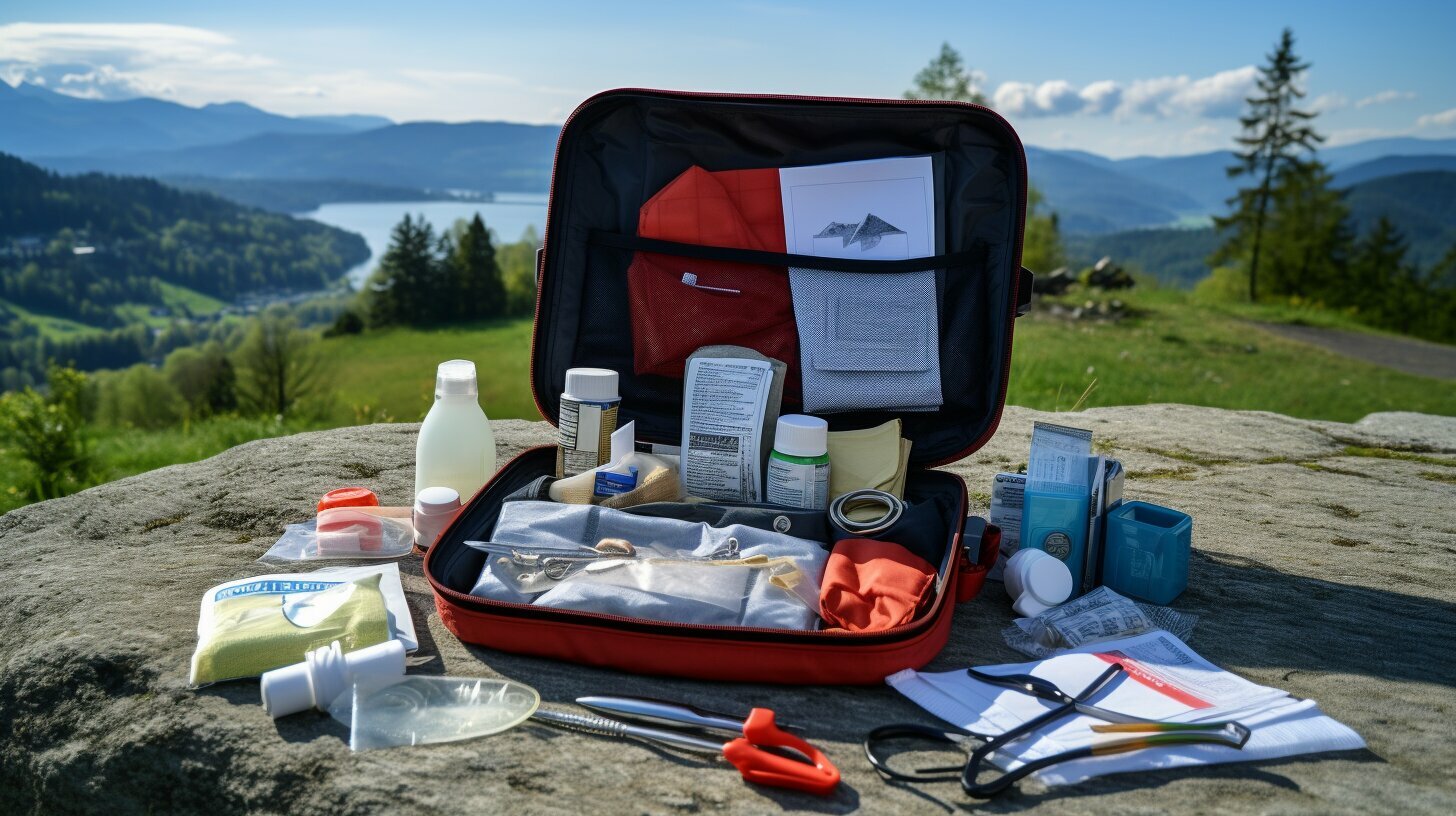
As you prepare for your next hiking adventure, remember that a comprehensive first aid kit is an essential part of your outdoor gear. By including the necessary wound coverings, medications, hand sanitizer, eye drops, and rehydration salts, you can be better prepared to handle any potential injuries or medical needs that may arise. Evaluate the length and nature of your trip, consider personal needs, and strike a balance between carrying necessary items and minimizing weight and bulk. With the right supplies and knowledge, you can enjoy a safe and worry-free hiking experience.
Personal Items for Hiker’s First Aid Kit
In addition to medical supplies, it is crucial to include personal items like sunscreen and bug spray in your hiker’s first aid kit to ensure overall well-being during outdoor adventures. Protecting your skin from harmful UV rays and preventing insect bites are essential for a safe and enjoyable hiking experience.
Sunscreen is a must-have item for any outdoor activity. Choose a broad-spectrum sunscreen with a high SPF to protect your skin from both UVA and UVB rays. Apply it generously to exposed skin, including your face, neck, arms, and legs. Reapply every two hours or more frequently if you are sweating or swimming. Sunburn can not only be painful but can also increase the risk of skin cancer in the long run.
Bug spray is another essential item to include in your first aid kit. It will help repel mosquitoes, ticks, and other biting insects that can transmit diseases such as Lyme disease or West Nile virus. Look for a bug spray containing DEET, picaridin, or oil of lemon eucalyptus. Apply it to exposed skin, especially ankles, wrists, and neck, and consider wearing long sleeves and pants for additional protection.
By including sunscreen and bug spray in your hiker’s first aid kit, you can take proactive steps to protect yourself from sunburn and insect bites, ensuring a safer and more enjoyable hiking experience.

| Personal Items for Hiker’s First Aid Kit | Benefits |
|---|---|
| Sunscreen | Protects against harmful UV rays, reduces the risk of sunburn and skin cancer |
| Bug spray | Repels mosquitoes and ticks, lowers the risk of insect-borne diseases |
Key Takeaways:
- Include personal items like sunscreen and bug spray in your hiker’s first aid kit.
- Choose a broad-spectrum sunscreen with a high SPF and reapply every two hours.
- Use bug spray containing DEET, picaridin, or oil of lemon eucalyptus to repel biting insects.
- Wear long sleeves and pants for additional protection against sunburn and insect bites.
Ultralight Backpacking First Aid Kits
When embarking on ultralight hiking trips, it becomes necessary to carefully select and reduce the quantity of items in your first aid kit to ensure a lightweight backpack without compromising safety. The key is to prioritize essential items while minimizing bulk and weight. Pre-packaged kits designed specifically for ultralight hiking can be a convenient option, as they are already curated with the essentials and are typically compact and lightweight.
Some important items to consider for an ultralight backpacking first aid kit include antiseptic wipes, bandages, gauze pads, medical tape, and pain-relief medication. These items provide basic care for minor cuts, scrapes, and blisters that may occur while hiking.
| Essentials for an Ultralight Backpacking First Aid Kit | Quantity |
|---|---|
| Antiseptic wipes | 10 |
| Bandages (assorted sizes) | 10 |
| Gauze pads | 5 |
| Medical tape | 1 roll |
| Pain-relief medication (e.g., ibuprofen) | 10 tablets |
In addition to these basics, items such as insect sting treatment, tweezers, and a multi-tool can also be included in an ultralight kit. It is crucial to evaluate the length and nature of your trip and consider personal needs when deciding what specific items to include.
Remember, the goal of an ultralight backpacking first aid kit is to strike a balance between carrying necessary items and minimizing weight. Regularly check and restock your kit to ensure it is always prepared for any emergencies that may arise during your hiking adventures.
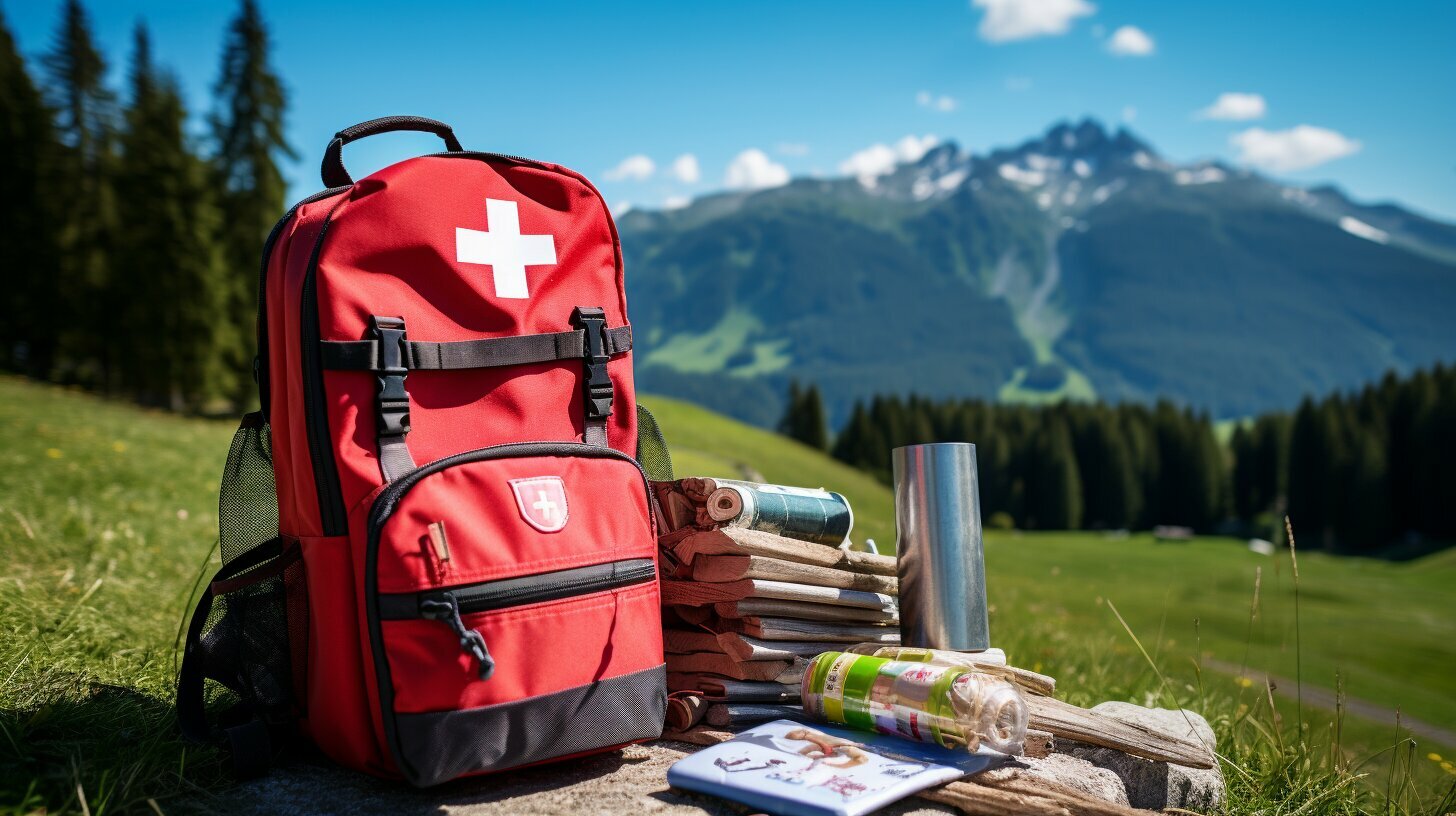
- Carefully select and reduce the quantity of items in your first aid kit for ultralight hiking.
- Consider pre-packaged kits designed for ultralight hiking for convenience and weight reduction.
- Include essentials such as antiseptic wipes, bandages, gauze pads, medical tape, and pain-relief medication.
- Add items like insect sting treatment, tweezers, and a multi-tool based on personal needs and trip evaluation.
- Regularly check and restock your kit to ensure it is always prepared for emergencies.
Evaluating Length and Nature of Trip
Before packing your hiker’s first aid kit, it is crucial to carefully evaluate the length and nature of your hiking trip, taking into account your personal needs and potential risks along the way. Each hiking adventure is unique, and understanding the specific requirements of your journey will ensure that you are adequately prepared for any potential emergencies.
Consider the duration of your trip and the remoteness of the hiking location. Longer or more challenging hikes may require more comprehensive first aid kits, including additional items such as finger splints, wound coverings, medications, hand sanitizer, eye drops, and rehydration salts. These supplies will help you handle more serious injuries or illnesses that may occur during outdoor adventures.
Assess the terrain and weather conditions you will encounter. If you are hiking in rocky or uneven terrain, consider including items like a multi-tool, thermometer, and surgical gloves to address potential injuries. Similarly, in extreme weather conditions, it may be necessary to carry additional items like an emergency bivvy, map and compass, GPS device, and a headlamp to ensure navigation and visibility.
Furthermore, take into account your personal needs and any pre-existing medical conditions. If you have allergies, make sure to pack appropriate medication and include insect sting treatment to manage potential bites. It is also essential to include personal items like sunscreen and bug spray to protect yourself from sunburn and insect bites during your outdoor activities.
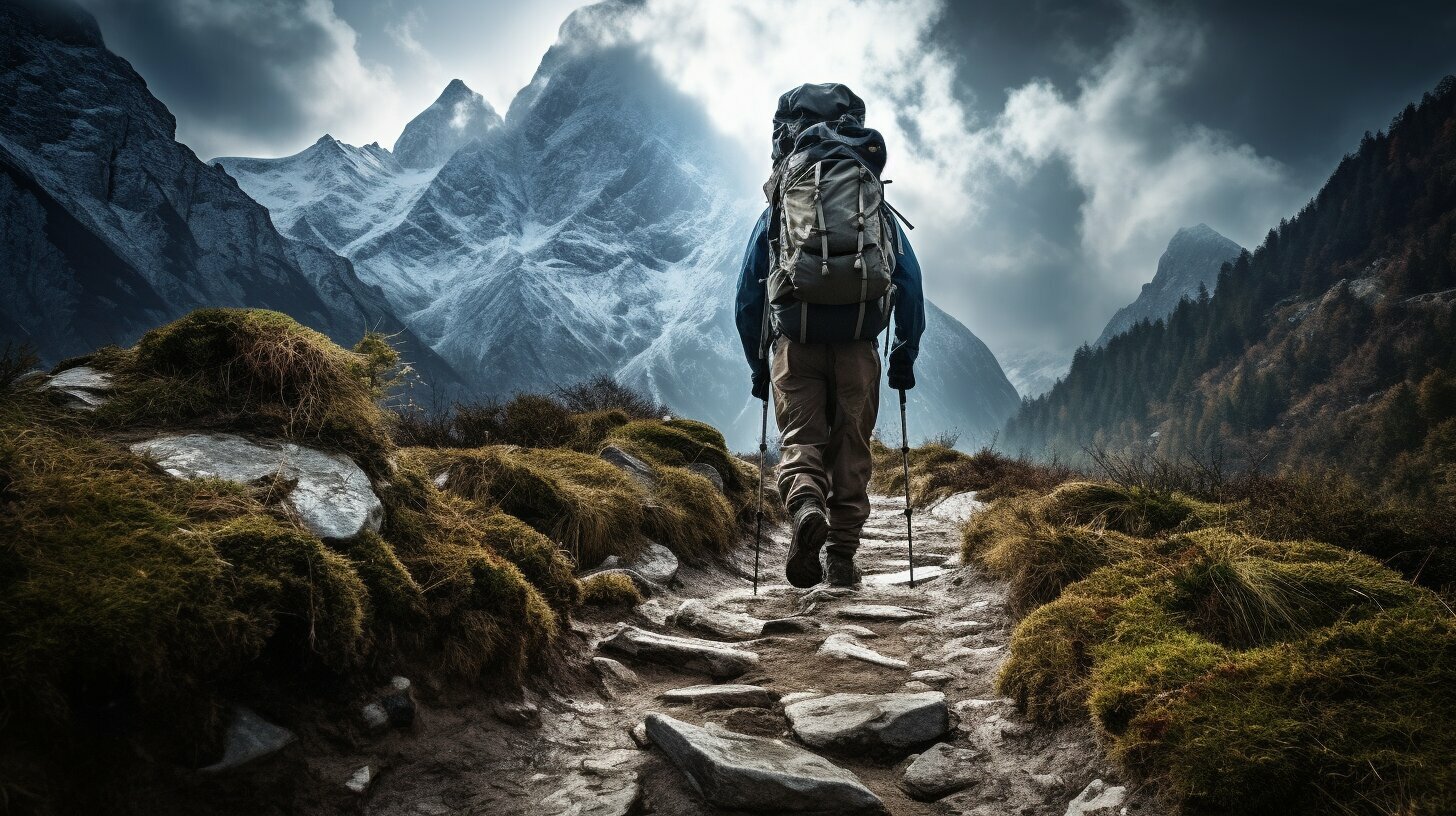
| Essential First Aid Supplies | Comprehensive First Aid Supplies |
|---|---|
|
|
Additional Safety Gear for Outdoor Adventures
Alongside your hiker’s first aid kit, there are additional safety gear items that you should consider bringing on your outdoor adventures to enhance your overall safety and preparedness. These items can provide essential tools and resources for navigation, emergencies, and ensuring visibility, especially during night hikes.
Emergency Bivvy
An emergency bivvy is a lightweight and compact shelter that can be a lifesaver in unexpected situations. It is designed to provide temporary protection from harsh weather conditions, keeping you warm and dry until help arrives. Whether you’re caught in a sudden storm or need to take an unplanned overnight halt, having an emergency bivvy in your backpack can offer peace of mind.
Map and Compass
Even with modern GPS devices, it is crucial to carry a map and compass as a reliable backup navigation system. These traditional tools can help you orient yourself, plan routes, and find your way in case of technology failure or unpredictable circumstances. Learning basic map reading skills and practicing with a compass can significantly enhance your outdoor navigation abilities.
GPS Device
While a map and compass are vital, a GPS device can provide real-time tracking, accurate coordinates, and detailed mapping functionalities. It is a useful tool for route planning, marking waypoints, and recording your progress. Having a GPS device can be particularly handy in remote areas or when venturing into unfamiliar territory.
Headlamp
A reliable headlamp is an indispensable item for any outdoor adventure. It ensures hands-free lighting during nighttime hikes, emergencies, or unexpected delays. Look for headlamps with adjustable brightness settings and long battery life for extended use. It’s also a good idea to carry spare batteries to avoid being left in the dark.
| Item | Function |
|---|---|
| Emergency Bivvy | Provides temporary shelter from harsh weather conditions |
| Map and Compass | Traditional navigation tools for route planning and finding your way |
| GPS Device | Offers real-time tracking, accurate coordinates, and detailed mapping functionalities |
| Headlamp | Hands-free lighting for nighttime hikes and emergencies |
Having these additional safety gear items in your backpack alongside your hiker’s first aid kit can significantly enhance your outdoor adventures. They provide essential resources for navigation, emergencies, and ensuring visibility, ensuring you’re better prepared for any unexpected situations that may arise. Remember, safety should always be a top priority when exploring the great outdoors.
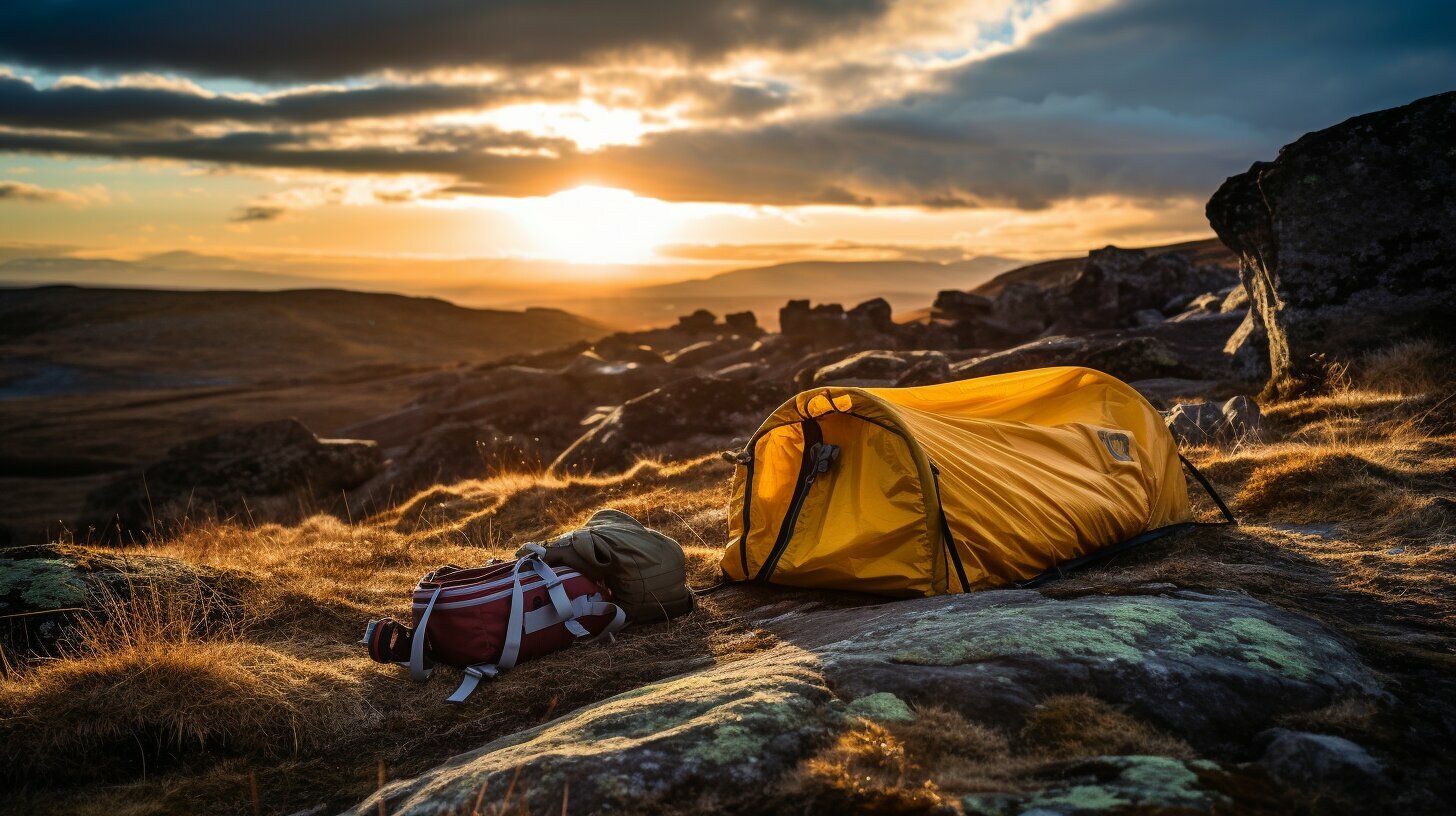
Equipping yourself with knowledge and skills in first aid techniques is crucial for effectively responding to hiking emergencies. Consider taking a first aid course or exploring educational resources on wilderness medicine for a comprehensive understanding.
By enrolling in a first aid course, you can learn essential life-saving techniques specific to outdoor environments. These courses provide hands-on training in vital skills such as CPR, wound management, and fracture immobilization. Understanding how to assess and stabilize injuries can make a significant difference in the outcome of an emergency situation.
Additionally, educational resources on wilderness medicine offer valuable information on recognizing and treating common outdoor-related medical conditions. These resources cover topics ranging from snake bites and hypothermia to altitude sickness and dehydration. Gaining knowledge in these areas can help you stay calm and respond effectively in challenging situations.
Remember, accidents can happen at any time, regardless of your level of hiking experience. Being prepared with the right skills and knowledge can not only potentially save lives but also give you the confidence and peace of mind to fully enjoy your outdoor adventures.
